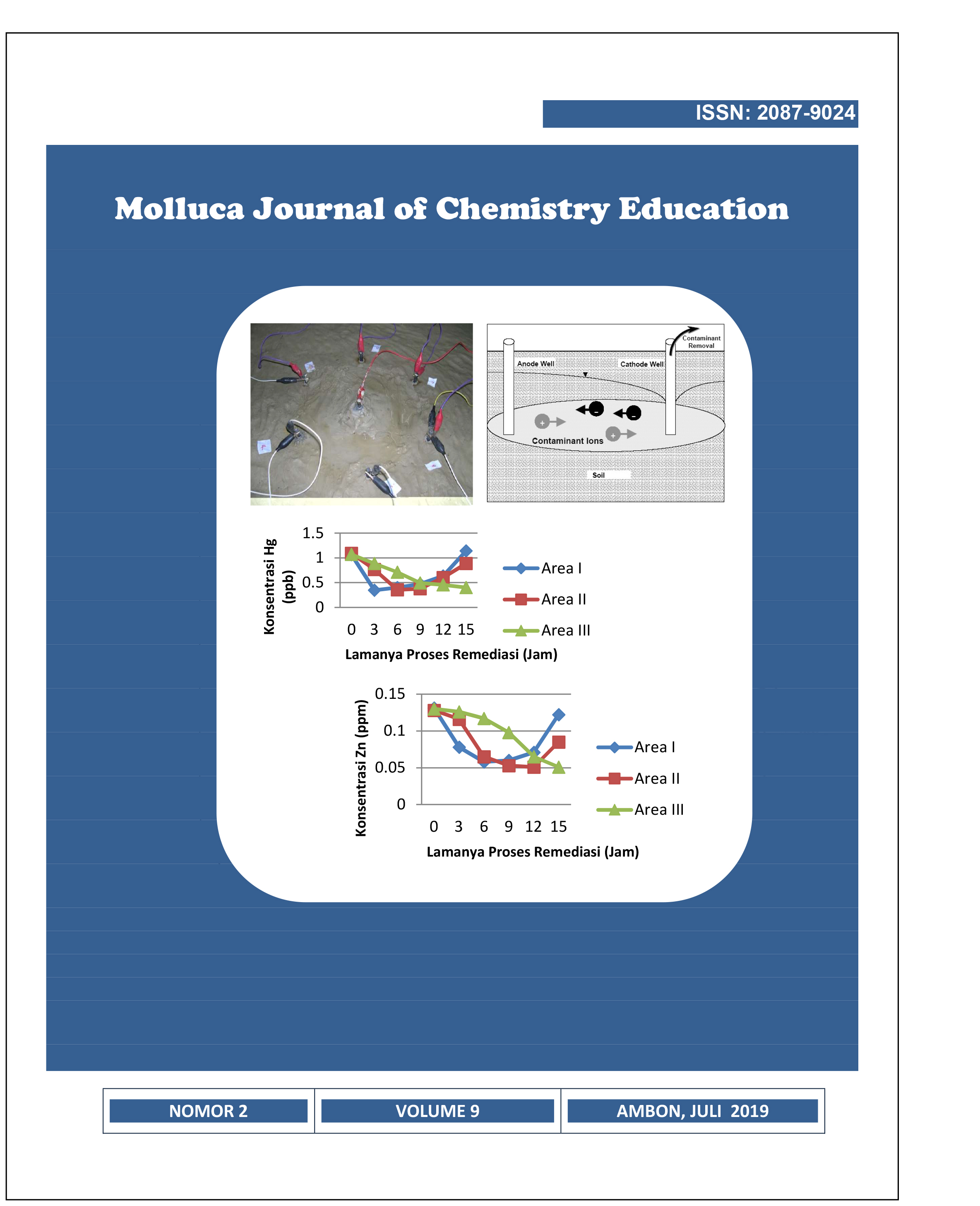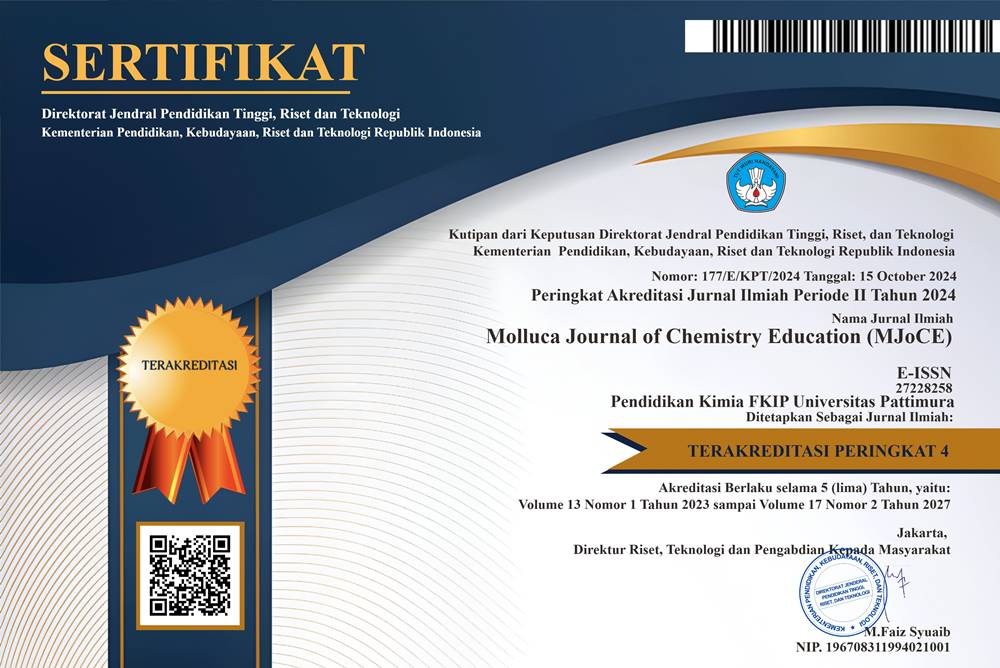ANALISIS METODE CHEATING PADA TES BERSKALA BESAR
Abstract
This study aimed to reveal: (1) the characteristics of items of Chemistry Test in National Examination by using the classical test theory and item response theory; (2) the amount of cheating which occured by using Angoff's B-index Method, Pair 1 Method, Pair 2 Method, Modified Error Similarity Analysis (MESA) Method, and G2 Method; (3) the methods that detect more cheating in the implementation of the Chemistry Test in National Examination for high schools in the year 2011/2012 in Maluku Province. The results of the analysis with the classical test theory approach show that 77.5% items have item difficulty functioning well, 55% items have discrimination yet qualified and 70% items have distractor that works well with the index reliability test of 0,772. The analysis using the item response theory approach shows that 14 (35%) items fit with the model, the maximum function information is 11,4069 at θ = -1,6, and the magnitude of the error of measurement is 2,296. The number of pairs who are suspected of cheating is as follows: 13 pairs according to Angoff's B-index Method, 212 pairs according to Pair 1 Method, 444 pairs according to Pair 2 Method, 7 pairs according to MESA Method, and 102 pairs according to G2 Method. The most widely detecting cheating in a row is a Pair 2, Pair 1, G2, Angoff's B-index, and MESA.
Downloads
References
Anderman, E. M., Griesinger, T., & Westerfield, G. (1998). Motivation and cheating during early adolescence. Journal of Educational Psychology. 90, 84-93.
Anderman, E. M., Pamela, K. C., & Derek, L. (2010). Impulsivity and academic cheating. Journal of Educational Psychology. 90, 84-93.
Cizek, G. J. (1999). Cheating on tests: How to do it, detect it, and prevent it. Mahwah, New Jersey: Lawrence Erlbaum.
. (April 2001). An overview of issues concerning cheating on large-scale tests. Paper presented at the annual meeting of the National Council on Measurement in Education, in Seattle, WA
Chula, G. K., Roger, W.G., & Chris, P. (2009). Online exams and cheating: an empirical analysis of business students’ views. The Journal of Educators Online, 6, 1.
Deden, A. A. (September 2012). Soal Ujian Nasional SMP Diduga Bocor.Tempo Online
Diambil pada tanggal 30 September 2012, dari :
Depdiknas (2003). Undang-Undang RI Nomor 20, Tahun 2003, tentang Sistem Pendidikan Nasional.
.(2005). Peraturan Pemerintah RI Nomor 19, Tahun 2005, tentang Standar Nasional Pendidikan.
Djemari Mardapi. (1999). Estimasi kesalahan pengukuran dalam bidang pendidikan dan implikasinya pada ujian nasional. Yogyakarta: UNY.
Eisenberg, J. (2004). To cheat or not cheat: effects of moral perpective and situational variables on students’attitudes. Journal of Moral Education, 33, 2, 163-178.
Hambleton, R. K., & Swaminathan, H. (1985). Item response theory: principles and applications. Boston, MA: Kluwer Academic Publishers.
Lama, M. Al. (2008). Student’s attitudes toward cheat and relation to demographyc factors. European Journal of Social Science. 7, 1, 140-146.
Lim, V. K. G., Sean, K. B. S. (2001). Attitudes toward, and intentions to report, academic cheating among students in Singapure. Ethnic & Behavior, Lawrence Erlbaum Associates, 11(3), 261-274
McCabe, D. L., Linda K. T., & Kenneth, D.B. (2001). Cheating in academic institutions: a decade of research. Ethnic & Behavior, 11(3), 219-232.
Shapiro, E. S. (2011). Academic skill problems (4th Ed.). New York: The Guildford Press.
Williams, J. B. (2002). The plagiarism problem: are students entirely to blame. Proceedings of ASCILITE. Australia
Williams, K., M., Craig N., Delroy L.P. (2010). Identifying and profiling scholastic cheaters: their personality, cognitive ability, and motivation. Journal of Experimental Psycology. 16 (3), 293-307.
Copyright (c) 2019 Molluca Journal of Chemistry Education (MJoCE)

This work is licensed under a Creative Commons Attribution-NonCommercial-ShareAlike 4.0 International License.





